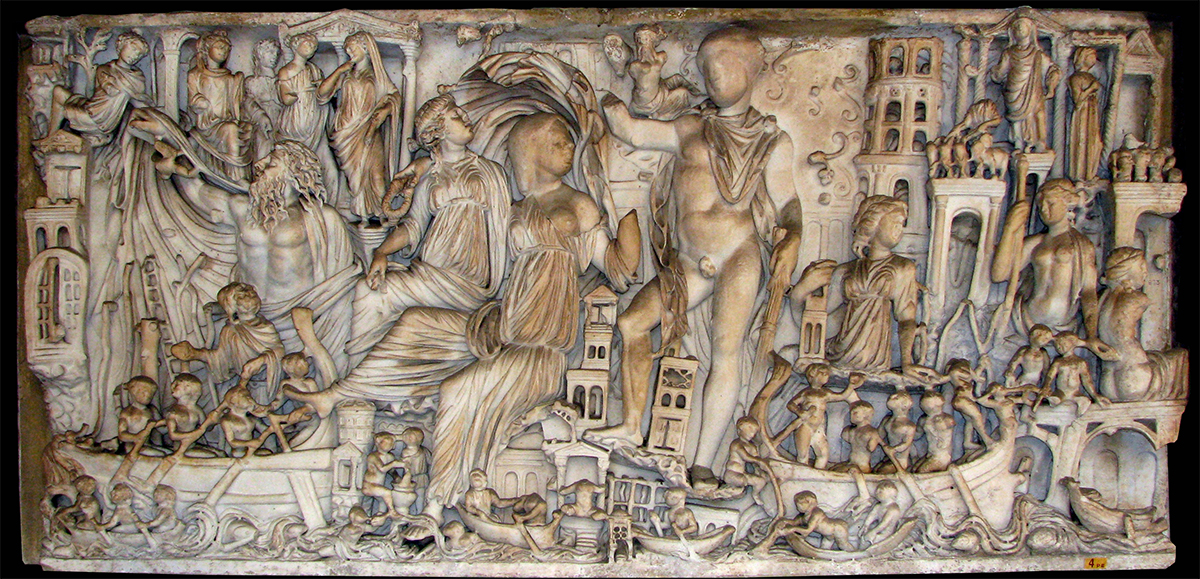
A Comment on Rome’s Supply Chain during the Empire .
After a report by Johan Rasmus Brandt
« ... so many ships arrive here, conveying every kind of goods from every people every hour and every day... »
« ... the arrivals and departures of the ships never stop, so that one would express admiration not only for the harbour, but even for the sea.2 »
« All roads lead to Rome » is a metaphor for an infrastructure which not only includes communication over land, but over sea as well. By the Late Republic and Early Empire Rome had turned the Mediterranean into a mare nostrum (our sea) and from every port along its shores ships brought wares to the capital of the empire. At the same time a network of roads had been created, which likewise played an important role in the distribution of wares between producer and consumer. And finally there was the Tiber, which brought local products down the river from the Italian inland and carried overseas products up from the large harbours (Ostia and Portus) by the river mouth.
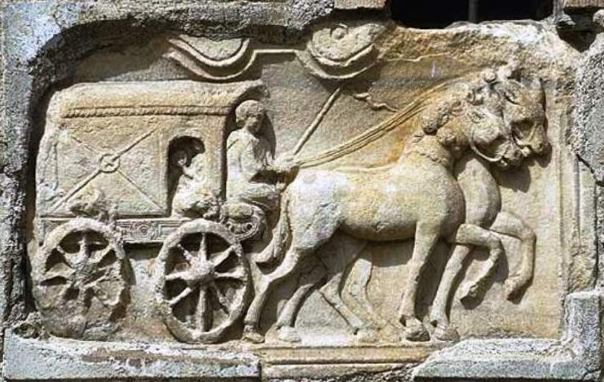
It was a complex system that had taken a long time to create and which needed constant maintenance. Its roots went back to the end of the fourth century BC, when Rome started its expansion and the Appian Way was built and Ostia founded. Roads and ports had to be built and maintained for land, river, and maritime transport, and adequate storage space for the commodities secured.
The long-distance public roads or highways became important communication routes for travellers, the cursus publicus3 , and the transport of commodities. These major roads were knit together in a wider network of vicinal roads, giving small villages’ access to each other and to markets and towns.
The Tiber was a part of Rome’s supply system from early on, and eventually it were the waterways, including the sea, which kept the city alive. It is specifically in this context that the Tiber’s ostium (rivermouth) played an important role.
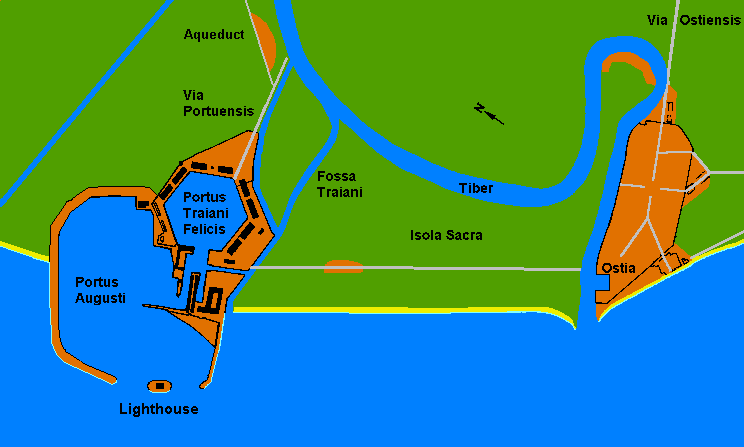
Ostia was originally established as a military garrison to protect the near-lying saltpans and to control the Tiber as part of the defence of Rome, but was soon turned into the capital’s overseas harbour. However, Ostia as a river port was not an ideal harbour. Shifting sand-banks prevented larger ships from docking; they had to anchor at sea, which made unloading difficult and risky4.
The expansion of trade in the Hellenistic period saw a steady increase in the tonnage of ships in the Mediterranean and resulted in a need for larger and better deep-water harbours. In 194 BC, under an initiative taken by Scipio Africanus5, a new port for Rome was built at Puteoli6 in the Bay of Naples. Thus creating the triangular harbour network Puteoli-Ostia-Rome, this for the following centuries secured the supplies of the capital.
The expensive link in Rome’s supply chain was Puteoli. It was also the most vulnerable. Caesar was among the first to realise this. However, it was not until the reign of Claudius that Caesar’s plans were put into effect.
The planning of a new harbour some 3 km to the north of the mouth of the Tiber was started in ad 42, by ad 46 two canals were built between the river and the sea and probably by ad 54 the harbour basin was finished. The works, however, continued through improvements to the quays and the adding of storage buildings, and may only have been completed by Nero in ad 64.
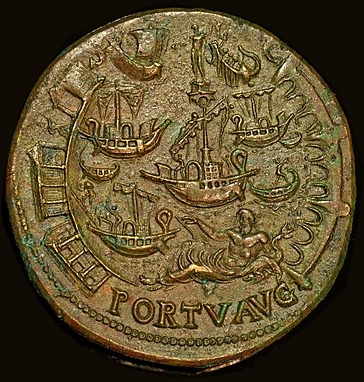
A beautiful sestertius showing the harbour was perhaps struck to commemorate this event.
The site chosen consisted of large sandbanks, which had been dredged and long breakwaters built into the sea and included a lighthouse, to protect the harbour basin. Behind this large artificially created oval-shaped basin, extending for more than 1,200 m, was added the rectangular darsena and connections with the two canals. The large basin was created for the anchorage of incoming ships, which could unload their cargo directly to river boats, while the darsena was reserved for mooring. The vulnerability of the new harbour, however, was demonstrated in 62 AD, when, during a storm, about 200 ships sank inside the harbour basin7. To eliminate this peril Trajan built in the years ad 106-113 a new hexagonal harbour behind Claudius’ harbour. After Trajan’s dead new warehouses were added. Pliny the younger wrote that Trajan, ... 'in his wisdom and authority and devotion to his people has opened roads, built harbours, created routes overland, let the sea into the shore and moved the shore out to the sea, and linked far distant peoples by trade so that natural products in any place now seem to belong to all. 8.
It was not without reason that Pliny could boast of his emperor’s efforts in this respect. Shortly after Portus he finished also the harbour at Ancona9 on the Adriatic coast. As Nero had done a couple of generations earlier at Anzio10 (about 45 km south of Rome), Trajan built himself a large villa including a port at Centumcellae (Civitavecchia, about 70 km north of Rome), a project Pliny the younger had seen in construction in ad 106 11.
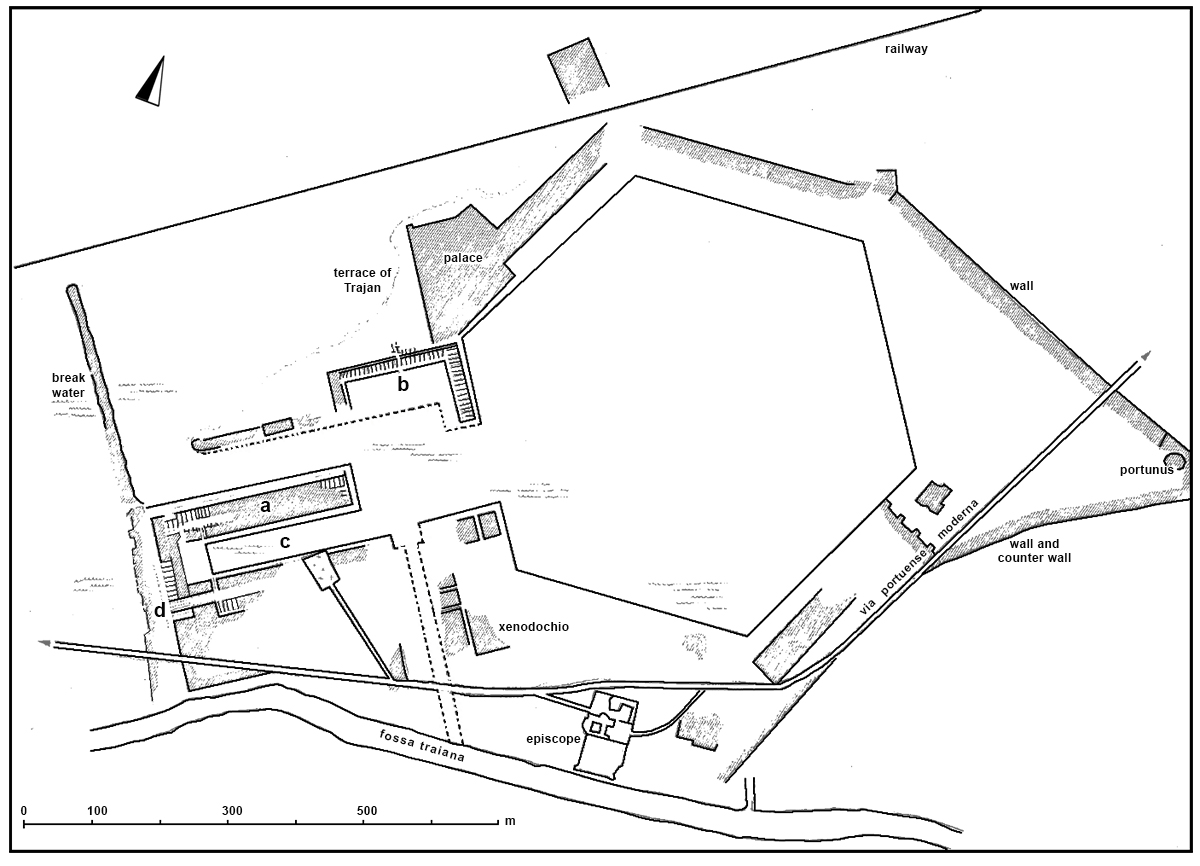
Furthermore Trajan has, in connection with other public works at Terracina12 (about 100 km south of Rome), also been given the honour for having, if not built, then certainly improving the town’s port facilities, where he made a new branch of the Via Appia. Also the Via Domitiana was continued from Puteoli to Naples by Trajan.
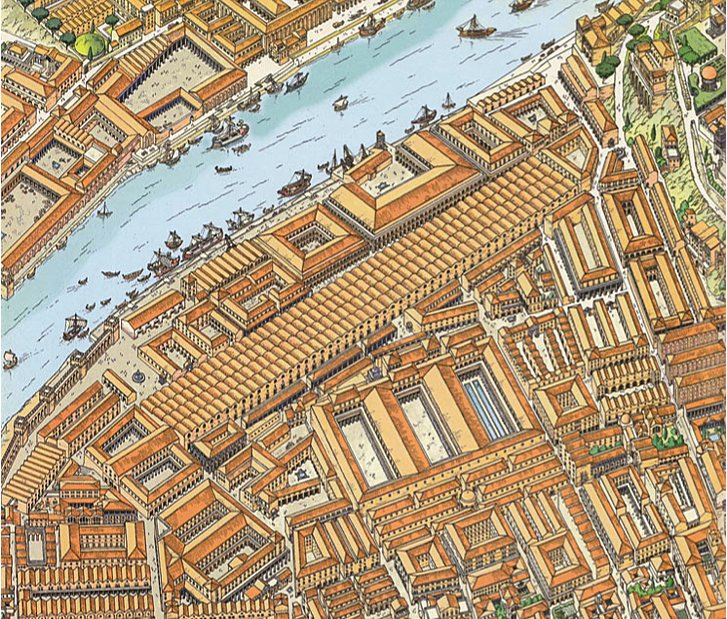
In Rome there were already storage facilities built by Scipio Africanus13 and the closely bound Aemilii-family with their porticus Aemilia14. Trajan restructed the Forum Boarium and Portus Tiberinus higher up the river and he furthermore built the emporium area near Montetestaccio, a large complex consisting of some 500 m long quays and 90 m deep storage buildings. The improvements of the Forum Boarium and Portus Tiberinus were Trajan’s first public works. So, from the very start of his reign he had set his mind on the supply of commodities to the city. His interest for the import of goods to Rome can be seen in the Mercati Traiani, an ancient supermarket, in which many of the imported goods were sold by retail: this was the last link in the supply chain.
What volume of commodities did Rome receive each year from overseas trade?
With the exception of grain the ancient sources give no figures from which to work out the yearly imports, and for the grain the reliability of the figures is much questioned. The French historian and archaeologist Joël Le Gall (1913-1991) considered that the total amount of commodities brought to Rome reached about 800,000 tons annually, his German colleague Ulrich Fellmeth proposed a more modest estimated guess of 400,000 - 660,000 tons, while others for grain, oil and wine advanced the figure 423,000 tons.
To arrive at a reasonable estimate, the starting point could be the number of inhabitants of Rome. For the imperial times this should be between 800,000 and 1,200,000.
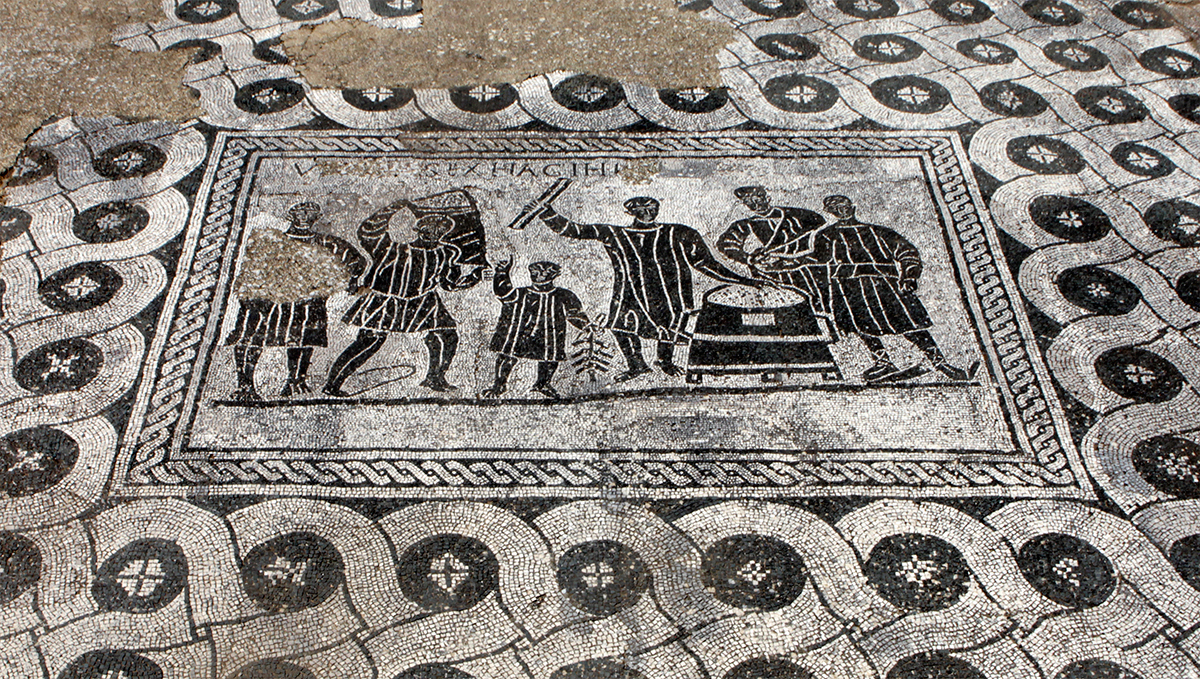
GRAIN
The import of grain, because of its vital importance for the nutrition of Rome’s population and subsequently its governmental control, is the only trade activity that can furnish some ancient figures useful for the calculation of its amounts. There are a few sources that tell how much grain was imported from Egypt/North Africa and some how much was consumed in Rome.
According to these sources the imported quantities of grain each year appears to have been about 60 - 63 million modii15, equivalent to 400.000 - 430,0000 tons.
Another approach to arriving at grain consumption is to look at population size and daily calories required. The results of this approach show a much larger fluctuation, ranging from 170,000 tons (24 million modii) to 350,000 tons (50 million modii) with the first figure being based on a low calorie requirement, the second on a high calorie requirement of the population.
OIL, WINE, AND FISH PRODUCTS CARRIED IN AMPHORAE
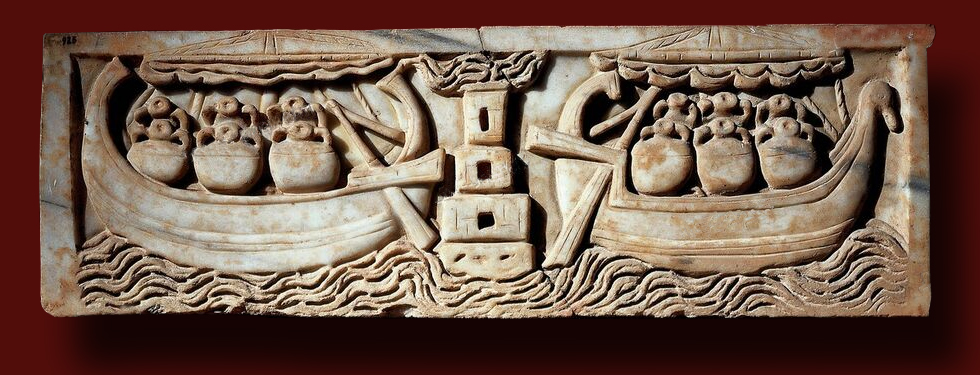
Oil
The calculations of overseas imports of wine, oil, and fish products have attracted less interest, mainly because we lack ancient information on their quantities. The consumption of oil, even if some data should have been available, cannot be calculated according to calorific needs, because in addition to nutrition oil was also employed for many other purposes, in the preparation of medicines, unguents, and perfumes, for massage and cleansing of the body, and for lighting and lubrification.
For oil, however, there is one calculation in which E. Rodríguez Almeida18 looked at the estimated presence of imported oil amphorae (in early imperial times dominated by the those from Baetica by the late 2nd century ad balanced by those from North Africa) dumped at Monte Testaccio19, the large mound of potsherds in the harbour and warehouse area of Rome from the time of Augustus to about 255 AD. Almeida concluded that the yearly average dumping arrived at ca. 321,000 amphorae, which would have contained about 224,800 hl oil, if the amphorae on average had carried 70 l each.
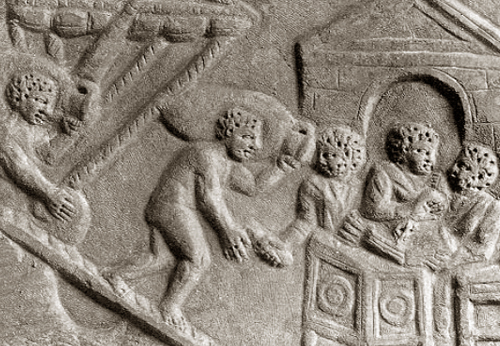
Wine
However, wine was also produced locally, according to Tchernia perhaps making up for half of the total. The total overseas import (including Italian provinces) would thus on average have ranged between 656,000 hl and 984,000 hl, orthe equivalent of about 2,523,000-3,785,000 amphorae of an average volume of one amphora, or approximately 26 l, each. With an average weight of 40 kilos per amphora filled with wine the total weight of these amphorae would have been 100,920 - 151,400 tons.
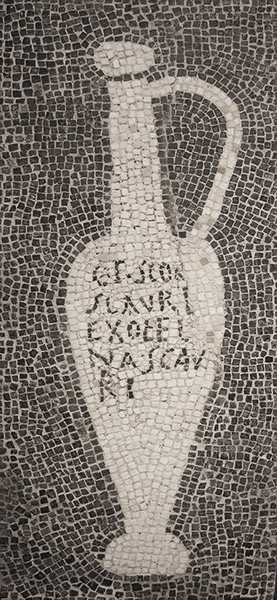
Fish products
Many fish products, like different kinds of sauces as garum, liquamen, allec, and muria, or in salted condition (salsamentum) were transported in amphorae, but our information on these makes it even more hazardous to calculate their quantity.
These fish products were popular agents to season food and the dominant producer for the Roman market was Baetica. The size of the amphorae carrying the sauce was a bit smaller than that of the wine, on average containing 22 l or about 5/6 of an amphora. The total import of ‘bottled’ fish products would be in the region of 65,600 - 98,400 hl carried in about 298,000 - 447,000 amphorae per year. With an average weight of 35 kilos per filled amphora the total weight would have been about 10,430 - 15,645 tons per year.
OTHER COMMODITIES
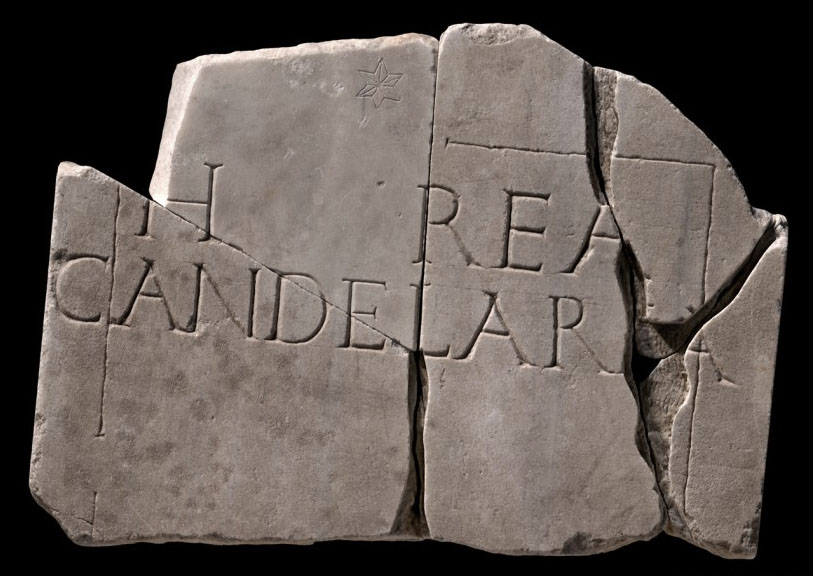
The number of kind of commodities arriving Rome each year are impossible to list, but a picture of its magnitude emerges from casual references in ancient texts (as, for example, legumes, meat, sea-sonings other than fish products, cheese, fruit, honey, fish, wool and textiles, metals, marbles and valuable stones, etc.), recorded names of storage buildings like the Horrea Piperataria (pepper), Horrea Chartaria (papyrus), and Horrea Candelaria (wax candles) in Rome, and excavations on land and at sea. The emporium district in Rome attested the finds of an elephant tusk in one storage-room, lentils in another, sand used by stone cutters in a third, and amphorae of various sizes, was completely filling a fourth, giving some evidence of the variety of commodities imported and stored.
At Laurentum, south of Ostia, was a large animal park where various animals were temporarily housed including camels and elephants (the remains of an elphas africanus has been found near Castel Fusano). The area was apparently used as a transit station for wild, imported animals to the amphitheatres in Rome.

However, the most solid data comes from ancient shipwrecks. In these have been found, in addition to the nearly ever present amphorae containing wine, oil, and fish products, as discussed above, all sorts of ceramic tableware, lamps, dolia, pithoi, louteria, furthermore building material (roof-tiles, tiles, terracotta pipes), metal as ores, ingots and finished products (lead, iron, copper, tin24 en bronze), stones and marbles as raw blocks or as finished, or nearly finished products (sarcophagi, columns, building stones, grinding stones), pine-cones, resin, glass vessels and objects, etc.
To pick one commodity: the variety of stones and marble used in ancient private and public architecture (as seen in excavated and standing buildings, in spolia used in later buildings, or in storage areas both at Ostia and Rome) brought from Greece, Asia Minor, Egypt, North Africa, Spain, and Gallia, but also from the caves at Carrara in northern Italy, demonstrates well the efforts to which the Romans went to get the best products to their capital.
Many monolithic columns of excessive weights from 50 tons upwards were imported and some may have been transported in specially made ships, as were obelisks.
Many ships carried more than one cargo, but few more than five.
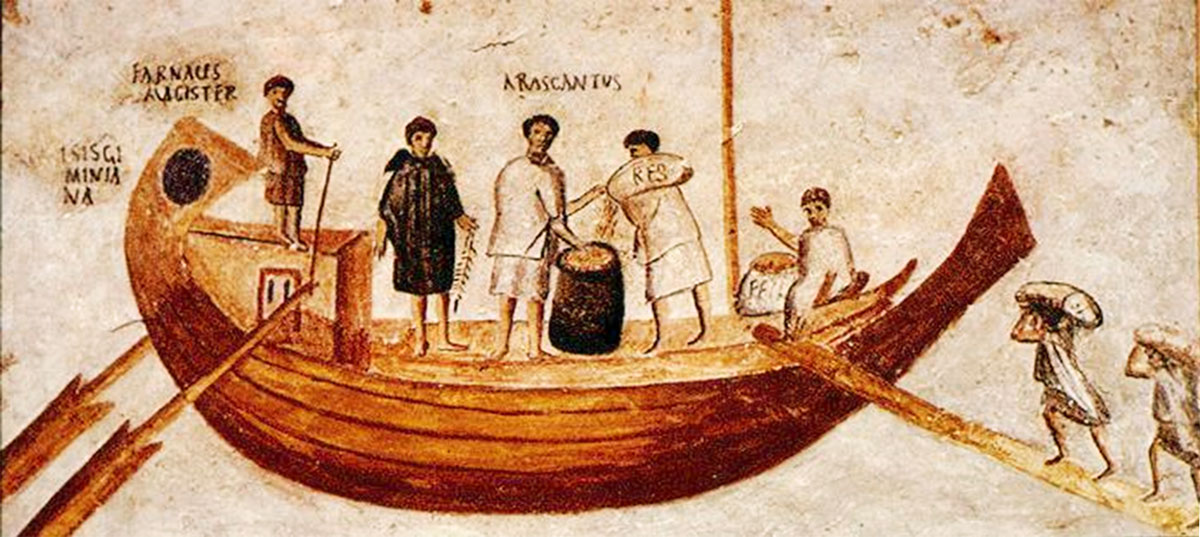
MARITIME TRANSPORT
For maritime transport we have to distinguish between ocean going (naves onerariae) and coastal ships even if their sizes would overlap each other. Many coastal ships were presumably also of a size that they could sail up rivers, thus saving reloading costs in coastal harbours. In order to establish an average tonnage for seagoing vessels two sources of information are available : imperial law texts and excavated shipwrecks found scattered around the Mediterranean, both at sea and in later silted-up coastal areas.
In a decree issued by Claudius the emperor offered Roman citizenship25 to Latins who built big vessels. Gaius26 informed that sea-going ships should have a carrying capacity of not less than 10,000 modii of grain (65-70 tons), and that in order to be eligible for citizenship the Latins concerned had to carry grain to Rome for 6 years.
In another decree, perhaps from the latter part of the second century AD, ship owners who, for the transport of grain, built one ship with a carrying capacity bigger than 50,000 modii of grain (i.e. 325 - 350 tons), or more (perhaps five ?) ships bigger than 10,000 modii, were offered exemption from public duties. It is very possible that the emperor in this way tried to encourage an increase in tonnage in order to reduce the number of ships sailing and mooring in the harbours. The average size of the vessels may therefore have been lower than those given in the decrees.
The first decree was issued in connection with a famine in Rome in 51 AD during Claudius’ reign. The size presumably referred to coastal and river boats (naves codicarii) used in the traffic between Puteoli, where the grain arrived at the time of Claudius, and Rome.
The figure 10,000 modii is well below the maximum size for sailing on the Tiber, which could receive ships with a carrying capacity of up to 3,000 amphorae, or 150 tons d.w. equal to max. 23,000 modii grain. Three of the four boats excavated at Claudius’ port at Ostia were considerably smaller. An analysis of ancient ship wrecks distinguishes three classes : 1) boats under 75 tons dead weight, the most common ; 2) boats 75-200 tons d.w. ; 3) boats above 250 (sic) tons d.w.
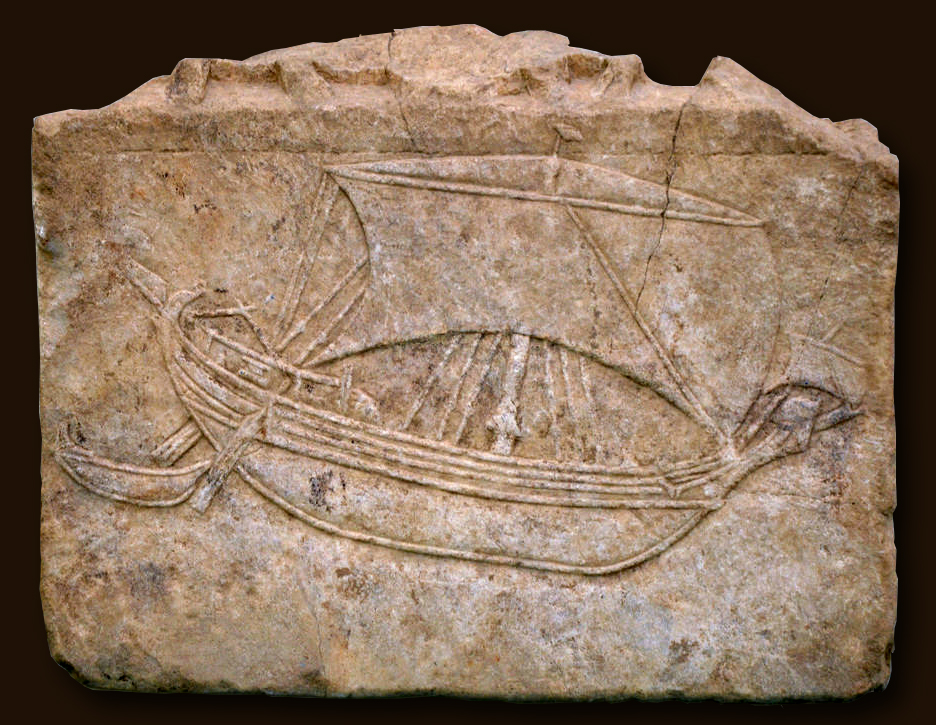
How many ships would have called each year at Portus from when Trajan’s harbour was fully operational ?
The grain ships from North Africa and Egypt would have managed two deliveries each year, while for ships carrying other commodities one could consider three deliveries where some of the ships made the voyage twice a year and another part three times. However, it is important to remember that not all ships in the Mediterranean sailed to Rome. The total number of ships needed to carry all the commodities with a total weight of 502.808 ton to Rome would have been somewhere between 1.011 and 1.807 ships (according to Tchernia).
The calls in the ports could not be made all year round. 27. The safest period for sailing was between May 27 and Sept. 14 ( = 111 days), but those daring it could extend the season by a couple of months at each end. From Nov. 12 to March 9, however, the sea was considered closed and not fit for sailing (mare clausum). That is why Claudius, when he discovered the shortage of grain in Rome in the first year of his reign, offered to cover all losses, ship and cargo, for the ship owners who, that winter, were willing to sail and bring grain to the city.
When Portus had taken over all the shipments of commodities directed towards Rome, it would receive on average 3.352 ships : 200 days = 16-17 ships per day.
In periods the harbour, whether at Portus or earlier at Puteoli, must certainly have been full of ships, especially when the first ones with grain from Alexandria arrived in early June. Their arrival would have been eagerly awaited for a long time, as Seneca experienced it at Puteoli ’Subito nobis hodie Alexandrinae naves apparuerunt, quae praemitti solent et nuntiare secuturae classis adventum; tabellarias vocant. Gratus illarum Campaniae aspectus est; omnis in pilis Puteolorum turba consistit et ex ipso genere velorum Alexandrinas quamvis in magna turba navium intellegit.’ 28
The arrival of the Alexandrian fleet meant not only the end of a possible spring shortage of grain, it also meant jobs for the seasonal workers, and in the hull of the ships were hidden many values that soon should exchange hands and honour many IOUs and mortgage deeds.

The unloading of moored ships took time because the numbers of dock workers (the saccarii), depending on the size of the ships and the docks, would be restricted. The time would be dependant on the number of workmen available and the time it would take to carry the wares from the ship to the storerooms and return for a new load.
A papyrus tells that the unloading of a ship carrying grain took 12 days29. One considered this to have been a rather large ship, perhaps one with a dead weight tonnage of 350. One with a tonnage of 150 would then have taken some 5-6 days to unload.
Let’s assume that a docker on average carries maximum 40 kilos of load (or one amphora of wine or sack of grain) at the time and that he can take 5 loads off the ship per hour: 150,000 kilos of commodities : 40 kilo per load = 3,750 loads; 3,750 loads : 5 loads per hour = 750 hours of work 750 hours of work.
10 Hours effective work per day = 75 days of work. To empty a ship in 5 days one would then need: 75 : 5 = 15 workmen.
If we assume 5 days as the standard for unloading a 150-ton ship, an average estimated number of 80-85 ships (16-17 ships for 5 days) would be in port at the same time for unloading, with between the 1,200 and 1,275 dockers would be needed. Reloading those ships required the same number of dockers, bringing the total of dockers to between 2,400 and 2,550 per day.
However, many ships remained in port after unloading ; some waiting for new loads, others having repairs made and securing provisions for a new voyage. In addition, unstable weather conditions may have prolonged some stays in the harbour, as well as bureaucratic difficulties.
In the papyrus just referred to we can read that the ship had arrived on June 30, unloading had finished on July 12, but by August 2 the skipper was still waiting for orders to sail. Circumstances like these made it necessary to design the size of a harbour based on other needs than simply what the volume of imported goods would dictate. Considering 10 days as an average time in port for the seagoing vessels, then each mooring/anchorage space could receive up to 20 ships in the course of the season. Converted this comes down to 123-124 ships with a low estimate and 213-214 ships with a high estimate.
Did the two harbours at Portus have such a capacity?
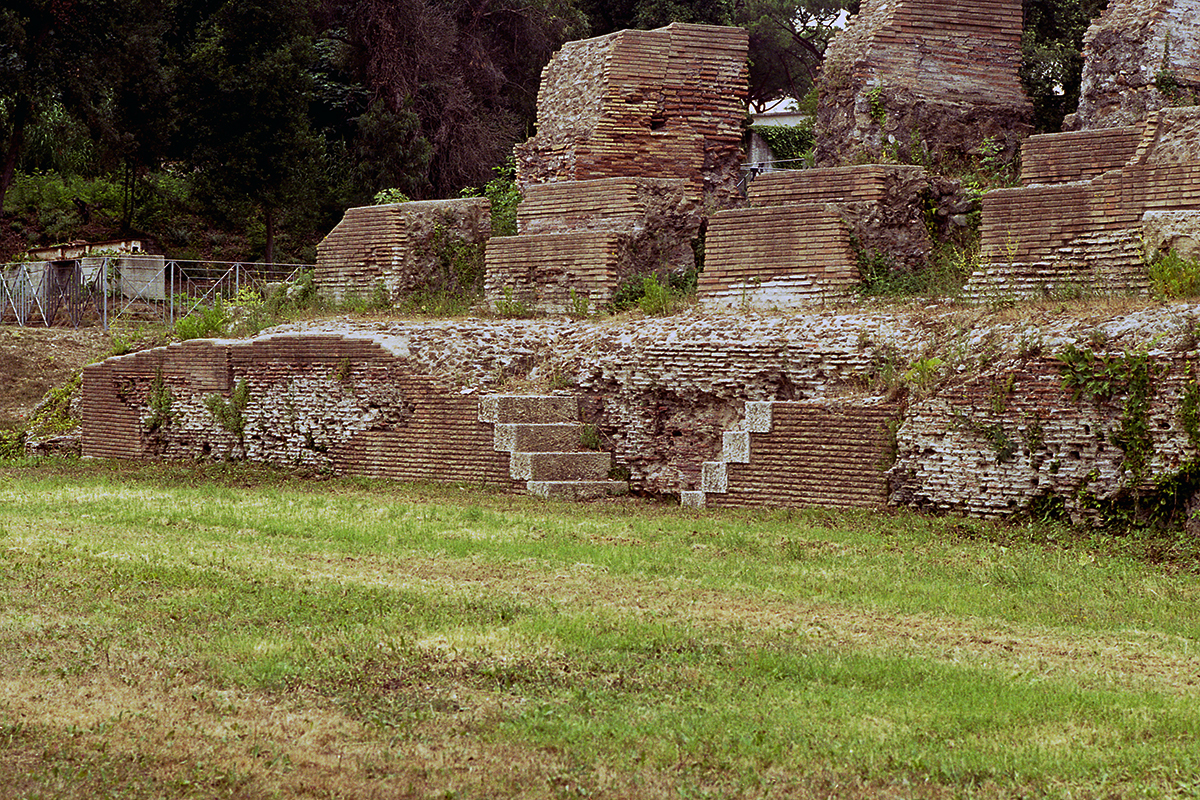
water from the large basin of Claudius)
Both harbours had a maximum depth of 4-5 m, thus limiting the size of the seagoing vessels putting into port.
The sides of Trajan’s hexagonal basin measured 358 m in length, its harbour inlet 118 m, for a total length of quays 2,030 m. Holed mooring blocks of travertine were bricked into the quay sides and placed 15 m apart. If we consider one boat for each block the minimum number of ships that could be moored would be in total 135, but in practice more ships could use the same mooring block, thus increasing the number of ships.
Between the two harbours was a transition area with quays and storage buildings, including a rectangular basin referred to as the darsena, measuring 45 x 240 m and built already under Claudius. This area had quays running for approximately 1,950 m, making room for another 130 boats, in all minimum 265 boats.
The Claudian harbour was not made primarily for mooring. Its long piers stretching into the sea, far away from the nearest storage buildings, functioned more as breakwaters, at best for the mooring of inactive ships or ships waiting for sailing orders. The large basin, however, served well for anchorage of ships and reloading directly to river boats, as had been the custom for large ships putting anchor at sea outside Ostia before the Claudian harbour was built.
In addition came another 2,000 m of quays along the canal joining the harbours with the Tiber, the so-called Fossa Traiana, and the river port at Ostia. In all, the harbour should be able to have at least 500 ships, split between sea going vessels and river boats, operating at the same time, and still have space for inactive vessels of both sorts for mooring and/or at anchorage. Portus was thus built more than large enough to both unload and reload commodities destined for Rome, even if the seagoing armada of merchant ships should have been of a low tonnage.
But did it have storage facilities for the large quantities of commodities arriving each year? We may wonder why the new harbours at the Tiber mouth did not take in the Alexandrian grain fleet as soon after they were ready. Instead the fleet continued to unload at Puteoli. One reason may have been established trading networks that were difficult to change. Another, and perhaps more pertinent, may have been the availability of storage buildings.
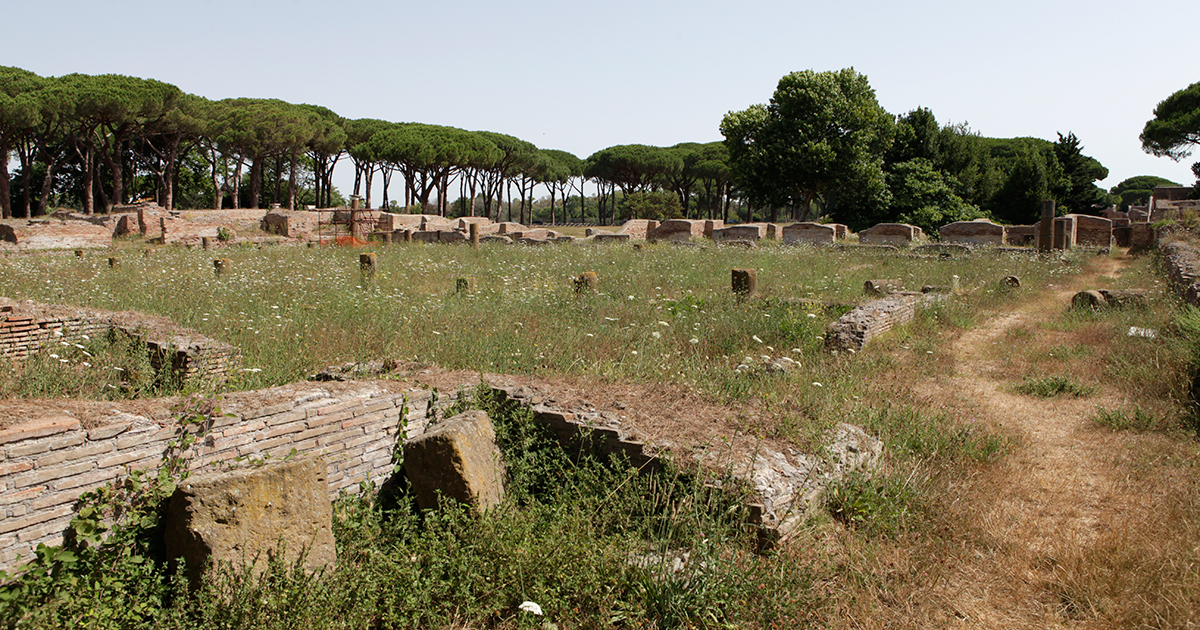
From the time of Claudius few have been registered and when Trajan’s harbour was inaugurated the storage buildings were still under construction. From available data there appears to be a parallel development of building activities at Portus and the raising of new or the refurbishing of old storage buildings at Ostia.
For only the grain it has been calculated that up to 500,000 cubic metres of storage space, or half a kilometre of storage buildings, was needed. However, Portus/Ostia was only a station on the way to Rome and nearly all storage was for wares in transit. The transit in its turn was dependent on available shipment up the Tiber, and of available storage space in Rome. This means that the total storage space at Portus, Ostia and Rome had to be large enough to receive all commodities arriving in the course of a year, in addition it needed a certain percentage of additional storage space for commodities that had not yet been distributed when the new sailing season started. We have no overview of the number of warehouses, nor their total capacity, nor even the total storage requirement.
So there is still a lot to research.
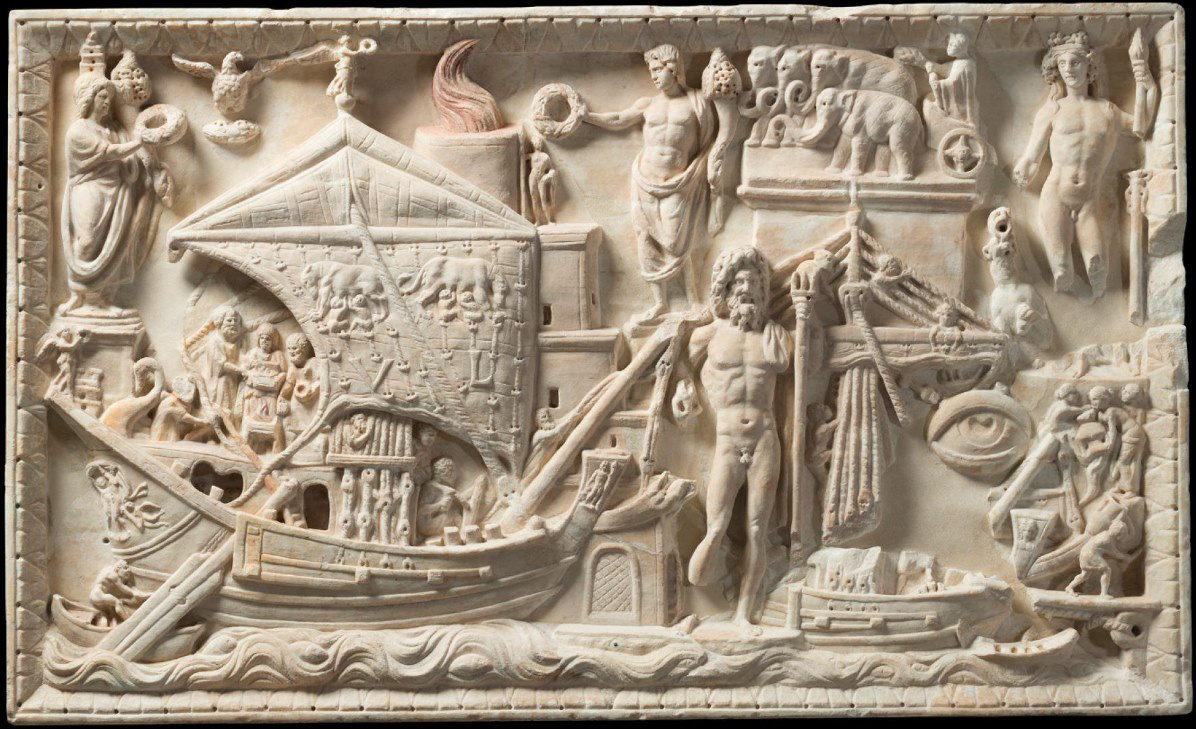
- Sources
- - Johann Rasmus Brandt - "The Warehouse of the World" .A Comment on Rome’s Supply Chain during the Empire.
Notes- 1:Sarcophagus found at Porta Latina in Rome. Now in Vatican Museum (inv. 927)
- 2: Publius Aelius Aristides Theodorus, Greek orator and writer (AD 117-181): Aristid. Or. 26.11 and 13.
- 3: Transport and Postal Service in the Roman Empire.
- 4:Zie 'A harbour for Rome' and 'The first harbour of ancient Rome'
- 5:Publius Cornelius Scipio Africanus Maior (236 – 183 AD), Roman general and politician.
- 6:Zie ook:'The ports of Campi Flegrei'
- 7:Tac. ann. 15.18.3.
- 8:Pliny the Younger: Panegryricus (29.2)
- 9:See also: 'The Elbow ruling the Adriatic Sea'
- 10: See also: 'Nero's port of Antium'
- 11: See also: ‘Centumcellae, the port of Trajan'
- 12: See also: ‘Tarracina, the fourth harbour of Trajan’
- 13: Publius Cornelius Scipio Africanus Maior (236 – 183 AD), Roman general and politician.
- 14: During the Second Punic War (218 - 201 BC) Scipio Africanus conquered large parts of Hispania from the Carthaginians. This was a fertile province from which large quantities of grain could be imported. To be able to store this in Rome, the Tiberhaven near the Forum Boarium was expanded and the warehouses of the Porticus Aemilia were built. The Porticus Aemilia was located right next to the city's Emporium, where the goods were traded.
- 15: Modii (pl) The modius (Roman bushel) is an Ancient Roman unit of measure, which corresponds to 16 sextarii, approximately 8.75 liters.
- 16: Floor mosaic in the Aula dei Mensores (hall of the grain weighers) in Ostia.
- 17: Relief (3rd century AD) found in the Praetextat catacomb.
- 18: E. Rodríguez Almeida (1930-2016): Spanish archaeologist and historian.
- 19: Monte Testaccio: large mountain of potsherds in the harbour and warehouses area of Rome from the period August till about 255 AD.
- 20: Relief from the 2nd century AD. (harbor) scene from Portus of the unloading of North African am foren. Three supervisors at the table, one giving a guidance voucher to the docker, the other noting what the third person dictates.
- 21: Photo Claus Ableiter. Black and white mosaic from the house of Aulus Umbricius Scaurus, Pompeii; G(ari) F(los) SCAM(bri) SCAURI EX OFFI(ci)NA SCAURI: First class mackerel garum from Scaurus, from the factory of Scaurus
- 22: The name is known only from fragment 44 of the Forma Urbis Romae, a large marble city map of Rome from the beginning of the 3rd century
- 23: Mosaic from Veii (Isola Farnese) Nowadays Badisches Landesmuseum Karlsruhe in Germany. Photo: Carole Raddato
- 24: See also: 'Ictis'
- 25: See also: 'The Roman Shipowners'
- 26: Gaius (circa 110 - 180) was a Roman lawyer
- 27: See also: 'Winter shipping'
- 28: EP. 77.1 Translation: Suddenly there came into our view to-day the ‘Alexandrian’ ships – I mean those which are usually sent ahead to announce the coming of the fleet ; they are called ‘mailboats’. The Campanians are glad to see them ; all the rabble of Puteoli stand on the docks, and can recog-nize the ‘Alexandrian’ boats, no matter how great the crowd of vessels, by the very trim of their sails.
- 29: U. Fellmeth 1991, Die Häfen von Ostia und ihre Wirtschaftliche Bedeutung für die Stadt Rom, pagina 21, note 65; Also Geraci 2003, pp. 645-646.
- 30: Foto: Fondazione Torlonia. Relief found at Portus.






 We are committed to providing versions of our articles and interviews in several languages, but our first language is English.
We are committed to providing versions of our articles and interviews in several languages, but our first language is English.